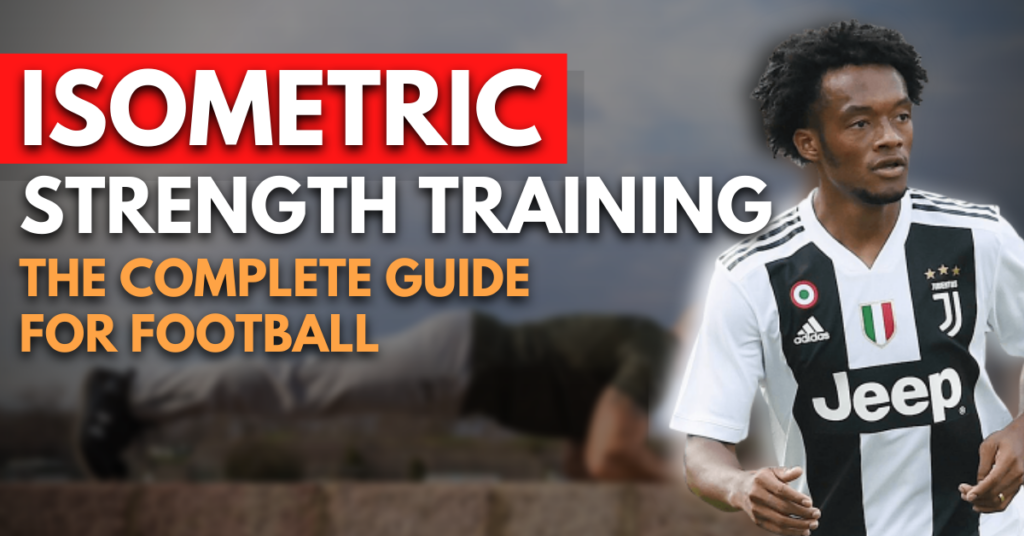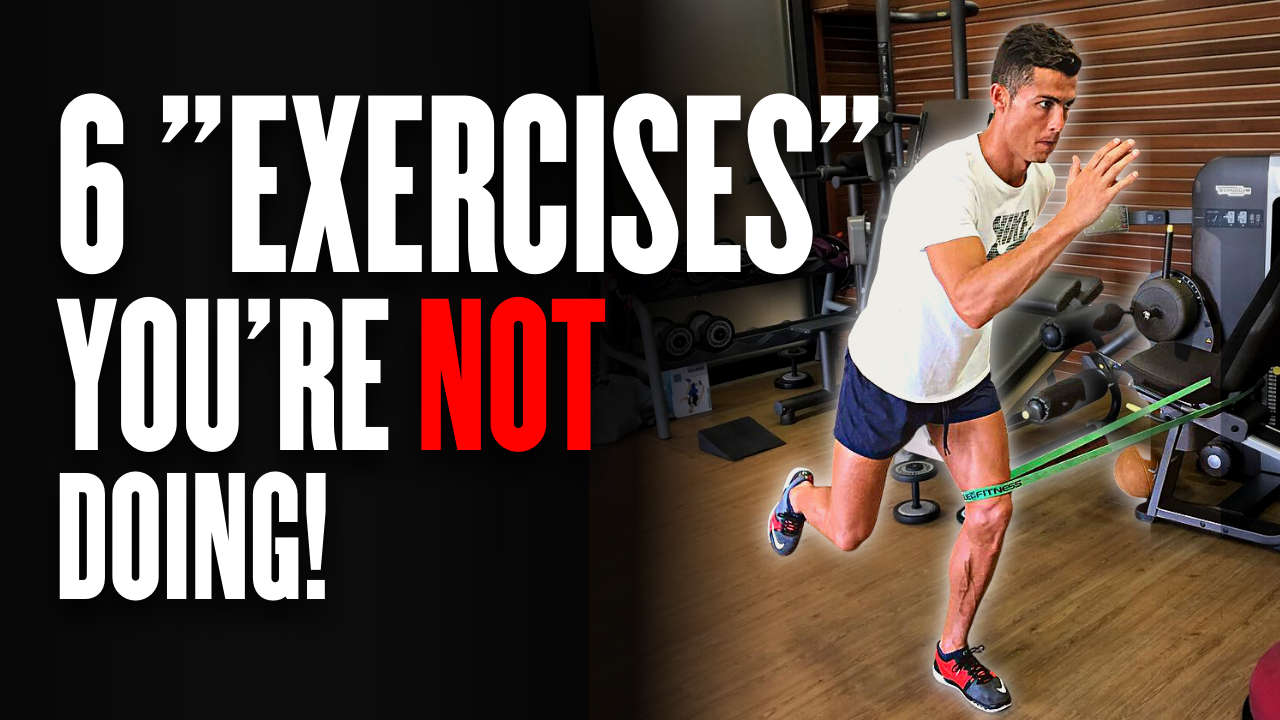
Isometric strength training is very popular in the sports & physiotherapy community, including football. We see athletes, coaches, and physiotherapists often using isometric strength training, especially during the recovery process of an injury. But are these exercises effective? And if so, what exactly do they contribute to, and how/when can a footballer use them?
Let’s start by defining isometric strength training.
DEFINITION OF ISOMETRIC STRENGTH TRAINING
Isometric strength training is a type of training that includes isometric exercises, i.e. exercises in which the muscle does an isometric contraction (the total length of the muscle and tendon doesn’t change and remains the same). Here are 20 examples of isometric exercises.
There are different types of isometric exercises, such as yielding isometrics, overcoming isometrics, extreme isometrics, etc. However, in this article, we will focus on the more traditional isometric strength training exercises but also mention some really simple information about overcoming isometrics for more advanced athletes. Each type is different in terms of purpose and intent. The thing that remains the same though, is the isometric contraction (no changes in muscle and tendon length).
IS IT IDEAL FOR FOOTBALL?
So, the truth is that in most cases isometric strength training creates relatively small adaptations in terms of the footballer’s athletic ability. This changes, however, if the player’s training level is small or the athlete comes from a long break off of the game. In this case, isometric strength training can lead to increases in strength, with results usually peaking after 6 to 8 weeks.
WHY IS IT NOT IDEAL FOR FOOTBALLERS?
“Isometric strength training has only little correlation with the actual movements you’re required to perform in-game.”
As mentioned, an isometric contraction keeps the length of the tendon and the muscle unchanged throughout the whole duration of the exercise.
However, the sport of football is a sport where the footballer uses his/her muscles, joints, and tendons to their full extent (full ROM – Range Of Motion). Therefore, isometric strength training has only little correlation with the actual movements you’re required to perform in-game. Thus, the use of isometric strength training in active adult athletes with a good training level is rare.
This is because there are a number of other exercises that offer better adaptations (results) in terms of strength, power, and speed. Isometrics are just not always the best use of your limited resources; time & energy.
WHEN CAN ISOMETRICS BENEFIT A PLAYER?
Contrary to what we mentioned in the last paragraph, isometric strength training CAN have some applications in football. We will mention three instances where they can be really useful and practical.
INSTANCE #1
The first case is the case of the untrained or beginner footballer/athlete. If exposure to any resistance training was little in the past, then the use of isometric strength training exercises in the early stages of a training program can be especially helpful.
At the end of the day, isometric exercises offer less DOMS (Delayed Onset Muscle Soreness) and are generally easier to do, if assisted by the coach with appropriate feedback.
INSTANCE #2
The second case is the case of the injured athlete. In this case, the use of isometric strength training in the early stages of a rehabilitation program is considered particularly effective, as the injured athlete does not need to activate the muscle/tendon in a full range of motion. In addition, the injured athlete regains a significant level of strength.

*As an affiliate, I'm earning from qualifying purchases without any extra charges being placed on you.
It’s a win-win scenario. You minimize exposure to full ROM risks, but also gain back strength that you’ve lost. Sounds good for early rehab.
INSTANCE #3
The third and last case has to do with your core. Your core needs to be able to resist and create movements in the spine, which in turn will help you sustain a quality posture. These are MUSTS, both for the gym and the game of football. The use of isometric strength training in the early stages of a training program can again help us build a base so that we can later move on to more dynamic core exercises.
Therefore, someone could use and benefit from isometric exercises, if they want to establish some new movement patterns or build a base for more dynamic exercises that will be applied later down the road.
Here are some isometric core exercises you can utilize to nail down the mechanics of these basic movements and slowly progress into more advanced and dynamic variations.
THE EXPERIENCED ATHLETE
Having said all of that, most of the time experienced athletes don’t have to gain much from traditional isometric exercises. To maximize the results, there are various other alternatives that may be preferred. However, the inclusion of some isometric exercises sporadically during the season for load-management reasons can be considered.
Finally, we will refer to a type of isometric exercises, that a trained athlete could implement into his/her training; overcoming isometrics.
OVERCOMING ISOMETRICS
These are exercises in which the athlete tries to move an immovable object with maximum intent. In this case, we have an isometric contraction, but with intent making the difference. The intensity in which we try to move that immovable object triggers maximum strength adaptations. If we compare traditional isometric exercises to overcoming isometrics, we would find that the difference lies in the force output. Regular isometric exercises produce sub-max force outputs at best. On the other hand, overcoming isometrics help us work closer to maximum forces.
This type of isometric training is suitable for trained athletes, with quality motor skills and a good strength base. We recommend using such exercises away from competitive periods, given that they can be extremely stressful on your neuromuscular system.
SUMMARY
To sum this topic up, is isometric strength training ideal for you? It depends.
If you are a very well trained footballer you will not see particular results from isometric strength training. The use of exercises that include a full range of motion is preferred. You might as well use overcoming isometrics as an alternative to traditional isometrics. Make sure to appropriately integrate them in your training – a specialist’s help and experience are advised!
If you are in a recovery phase, just starting out with working out, or want to nail down some basic movement patterns of your sport/workout exercises, then you can incorporate several isometric strength exercises into your program.

*As an affiliate, I'm earning from qualifying purchases without any extra charges being placed on you.
Context is king and every situation differs from individual to individual. If you have any questions, make sure to shoot us a DM on Instagram.




